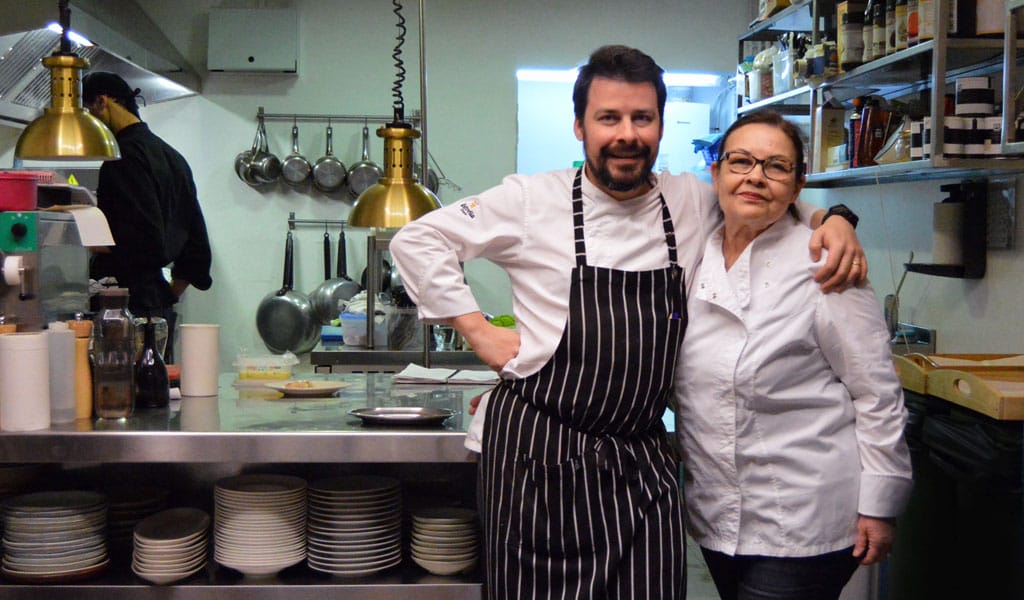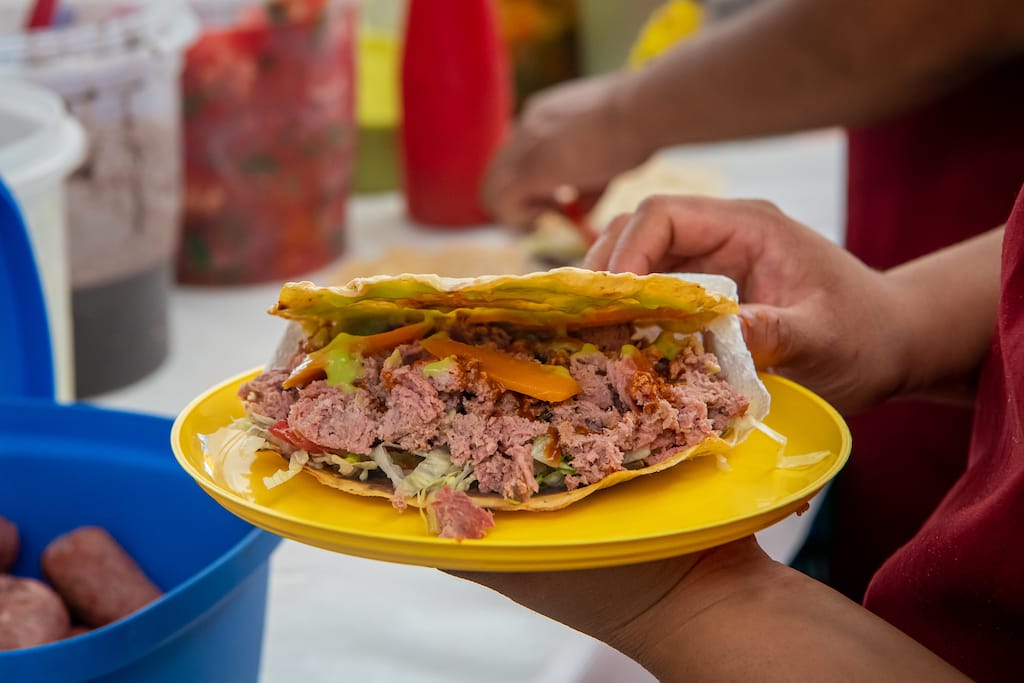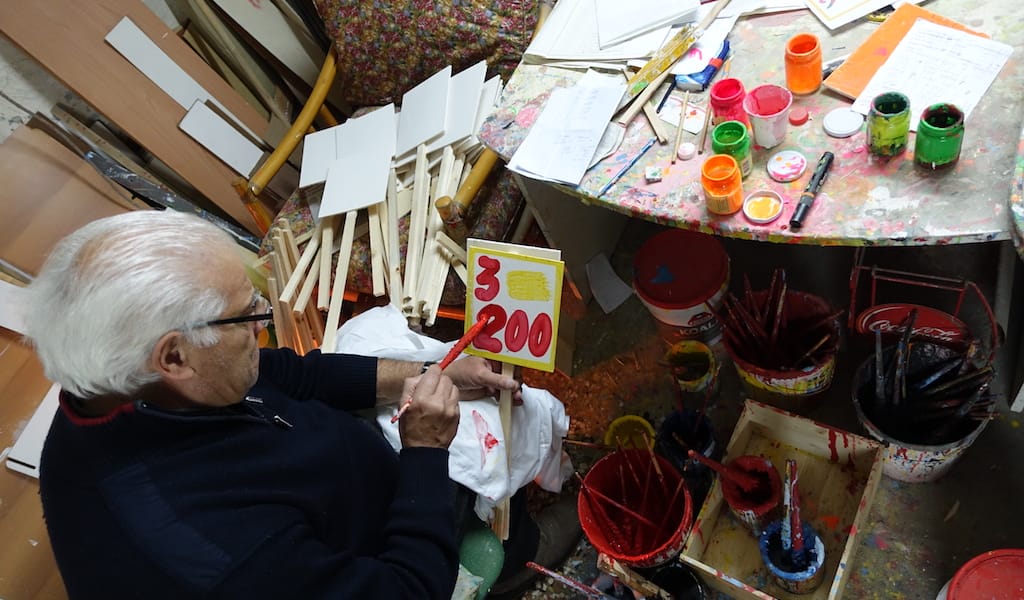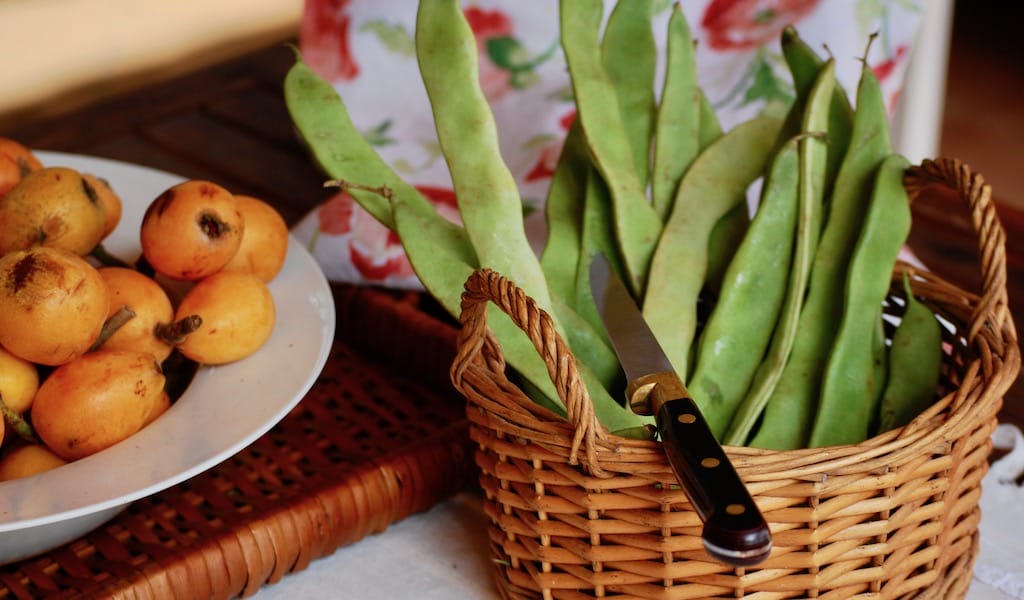Editor’s note: We regret to report that Sergi de Meiá has closed.
Sergi de Meiá, in his own words, “started in cuisine the day he was born,” growing up as he did in his mother’s restaurant. He received his first cooking lessons from her and from a family full of chefs and cooks before heading off to cooking school at 14.
Nowadays, his mother, Adelaida Castells, is still a fundamental part of the team at de Meiá’s restaurant and is in charge of the most traditional recipes they make. Those dishes are part of a concept dedicated to Catalan cuisine that is, de Meiá says, “evolutionary” and “determined by nature,” a tribute to local products, mixing tradition and modernity in the same pot and in a menu that includes a few historic recipes as well as vegan options.
De Meiá is a young passionate chef with a clear vision, a devotion to food history books and a solid professional background. After numerous stints in top international hotels and restaurants, he came back to Barcelona in 2000 and worked as head chef in the restaurants Reno, L’Excellance in Andorra and in Barcelona and finally Monvinic, one of the world’s best wine bars, where he led the kitchen for six years.
After this wealth of experience, he decided to open his own restaurant in L’Eixample, not far away from the city center, and devote himself completely to Catalan cooking, connecting his family’s roots and traditions to all his expertise in contemporary technique, with subtle international flourishes but using local organic produce.
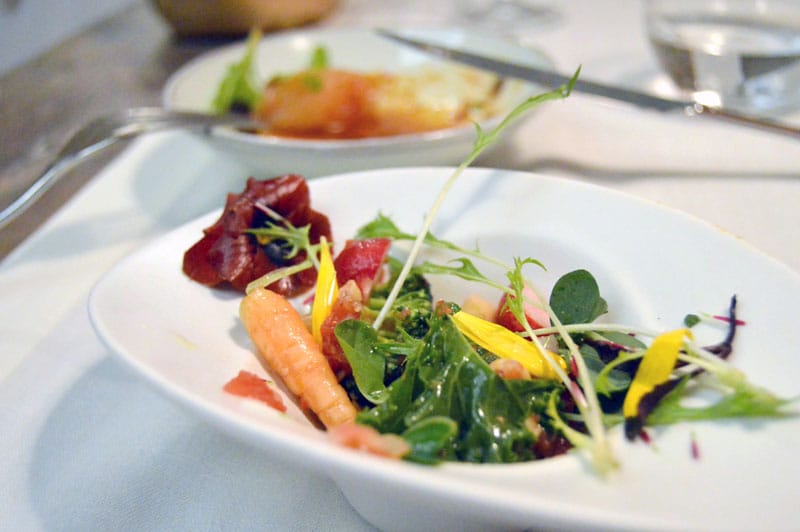
He is one of the founders of Slow Food Catalonia Km 0 – an initiative that identifies restaurants that serve and promote homegrown products – and believes in a strong social, political and environmental commitment to quality produce, the producers behind it and the land. Currently, de Meiá is fully involved in the protection and promotion of local organic agriculture, artisanal producers and the production of traditional foods, working directly with 87 Catalan farmers to get the best authentic ingredients for his kitchen.
As for de Meiá’s restaurant, you’re welcomed with a few plants and books in the entry, which leads into a narrow, long space of natural wood tables and soft colors that culminates in the kitchen. The short but complete menu includes the menu of the day and a surprise tasting menu – as well as a vegan version – of six dishes and two desserts, the perfect choice to dive into de Meiá and Castells’s cuisine. The tasting menu takes diners through the four Catalan provinces, its mountains and coastline.
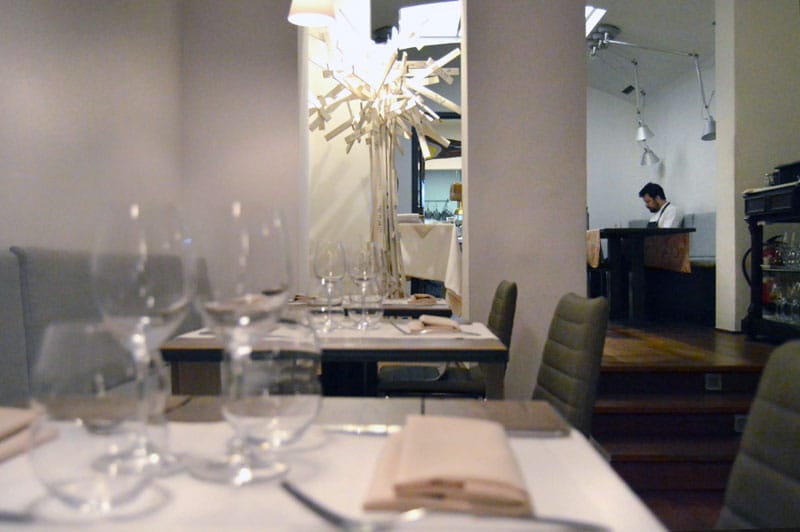
We started with a spoon of squash cream with a nutty Catalan picada, made of minced almonds and hazelnuts, and crowned with a flower, followed by a wonderful 19th-century dish created by Escoffier: a salad composed of a soft, juicy onion cooked for eight hours at a low temperature, some herbs and a great bittersweet sauce of muscat vinegar and raisins. Next came a ceviche made of cute organic mini vegetables grown by farmers in the Gallegs area and chickpeas from the Vallés region, all dressed with lemon. We loved de Meiá’s version of all i pebre, “garlic and pepper,” a traditional fish casserole from the Delta de l’Ebre in northern Valencia and southern Catalan with smoked eel chops in a delicious cream with caramelized pine nuts. Staying gastronomically close to the sea, we then had a wonderfully intense clam rice from the same region, with caramelized cuttlefish. The final dish was a nod to the mountains: very traditional meatballs from Pobla del Segur with another picada of minced almonds and hazelnuts, saint George mushrooms from the Pyrenees and aromatic herbs, including rosemary.
The two desserts complement the experience with a selection of Catalan artisan cheeses and a couple of lovely soft chickpeas flour fritters with Catalan cream. The perfect finish for a tour de force.
 May 10, 2022 Salchicha Ejuteca
May 10, 2022 Salchicha Ejuteca
The history of Oaxacan food is deeply linked to the concept of adaptation. Our culinary […] Posted in Oaxaca November 21, 2018 The CB Gift Guide 2018
November 21, 2018 The CB Gift Guide 2018
We said it last year, and we’ll say it again: we’re often not impressed with traditional […] Posted in Elsewhere May 13, 2020 Recipe
May 13, 2020 Recipe
From a humble petisco (“snack”) in tascas to a fancy dish in elegant restaurants, […] Posted in Lisbon
Published on May 10, 2017
Related stories
May 10, 2022
OaxacaThe history of Oaxacan food is deeply linked to the concept of adaptation. Our culinary identity has many chapters: the Mesoamerican native period, the colonial reign of Nueva España and the Mexico of the 20th century, which received another wave of immigrants who brought their gastronomic traditions and let them combine with the native and…
November 21, 2018
Elsewhere | By Culinary Backstreets
ElsewhereWe said it last year, and we’ll say it again: we’re often not impressed with traditional holiday gift guides. They’re either littered with undisclosed affiliate links or seemingly endless lists (much like our holiday to-dos) that make us want to turn off the computer and hibernate until the end of January. With that in mind,…
May 13, 2020
LisbonFrom a humble petisco (“snack”) in tascas to a fancy dish in elegant restaurants, peixinhos da horta are experiencing a revival in Lisbon. Chefs have perfected their crispy texture and experimented with dipping sauces, turning them into a simple and delicious starter or a snack to pair with a cold glass of white wine. Peixinhos…







































